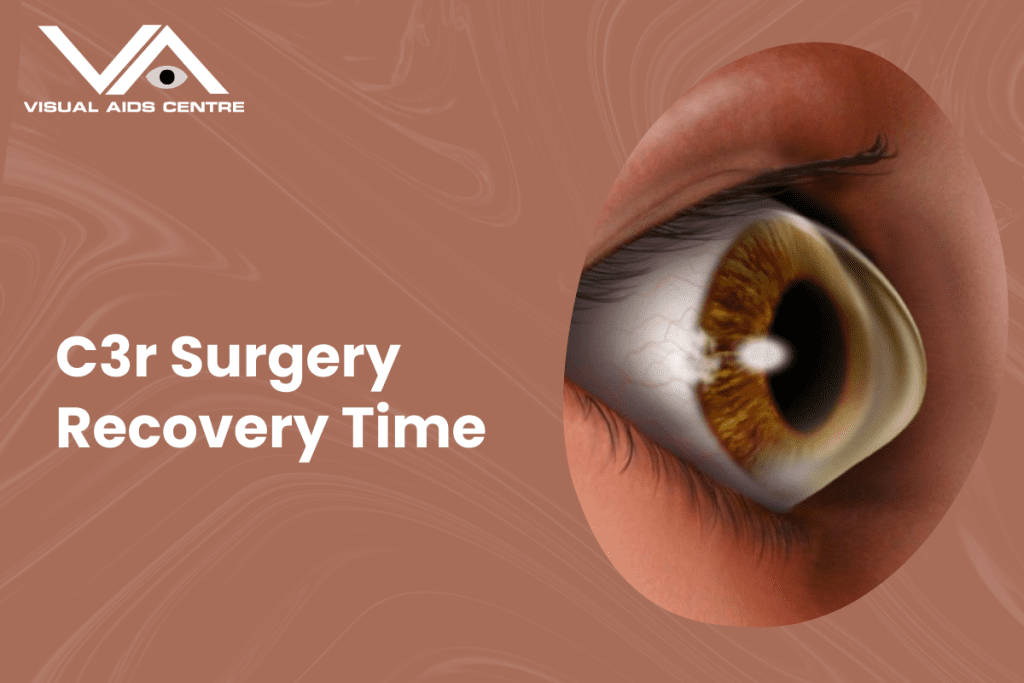Table of Contents
ToggleCorneal Collagen Cross-Linking (C3R) Surgery: A Comprehensive Overview
Corneal collagen cross-linking (C3R) surgery is a minimally invasive procedure that has gained significant attention in the field of ophthalmology. It is primarily utilized to manage progressive keratoconus and other corneal ectatic disorders. This note aims to comprehensively review C3R surgery, including its principles, techniques, clinical outcomes, safety profile, and future directions.
Corneal collagen cross-linking (C3R) surgery is a therapeutic modality that aims to strengthen the cornea, particularly in cases of progressive corneal ectasia.
C3R surgery can potentially halt or slow down the progression of diseases such as keratoconus by inducing additional cross-links between collagen fibres within the corneal stroma. This procedure represents a significant advancement in treating corneal ectatic disorders, offering a minimally invasive alternative to more invasive interventions like corneal transplantation.

Principles of C3R Surgery:
The fundamental principle of C3R surgery is applying riboflavin (vitamin B2) solution to the cornea, followed by ultraviolet-A (UVA) irradiation. Riboflavin acts as a photosensitizer, facilitating the formation of new covalent bonds between collagen fibres upon exposure to UVA light. These additional cross-links increase the biomechanical stability of the cornea, leading to improved structural integrity.
The technique of C3R Surgery:
C3R surgery involves several essential steps. First, the corneal epithelium is gently removed to allow for better penetration of the riboflavin solution. Subsequently, riboflavin drops or a soaked riboflavin-soaked hydrogel is applied to the corneal surface.
After an appropriate time for riboflavin penetration, the cornea is exposed to UVA light for a specified duration. The light activates the riboflavin, initiating the cross-linking process. Throughout the procedure, proper safety measures, such as corneal thickness monitoring and protective measures for adjacent ocular structures, are essential to minimize potential risks.
Clinical Outcomes:
Numerous studies have demonstrated the efficacy of C3R surgery in halting or slowing the progression of keratoconus and other corneal ectatic disorders. Clinical outcomes include improvements in visual acuity, corneal curvature, and corneal biomechanical properties. Long-term studies have shown the maintenance of these improvements over time, suggesting the durability of the C3R effect.
Safety Profile:
C3R surgery is generally considered safe, with a low incidence of complications. Potential risks include transient corneal haze, epithelial healing delays, infection, and corneal endothelial damage. However, advancements in the technique, such as introducing epithelium-on or transepithelial approaches, have further reduced adverse events.
Future Directions:
Ongoing research aims to refine C3R surgery by exploring novel techniques, optimizing the riboflavin delivery system, and investigating combination therapies. Additionally, investigations are being conducted into the application of C3R surgery for other corneal pathologies, such as infectious keratitis and corneal ulcers. The potential integration of C3R surgery with other refractive procedures, such as LASIK or PRK, also holds promise for enhancing surgical outcomes.
Recovery Time Following Corneal Collagen Cross-Linking (C3R) Surgery
Corneal collagen cross-linking (C3R) surgery is an increasingly utilized procedure for treating corneal ectatic disorders. Understanding the recovery process and expected timeline following C3R surgery is crucial for both patients and clinicians.
This note aims to provide a comprehensive review of the recovery time associated with C3R surgery, encompassing the resolution of postoperative symptoms, visual rehabilitation, and long-term outcomes. The information presented herein is based on a thorough analysis of the current literature.
Immediate Postoperative Period:
Following C3R surgery, patients typically experience immediate postoperative symptoms such as pain, foreign body sensation, light sensitivity (photophobia), tearing, and blurred vision. These symptoms are largely transient and gradually diminish over the first few days to weeks. Topical lubricants, analgesics, and anti-inflammatory medications are often prescribed to alleviate discomfort and promote healing during this period.
Epithelial Healing:
The healing of the corneal epithelium, typically removed during C3R surgery, is an important aspect of the recovery process. Epithelial healing varies among individuals but generally takes approximately three to five days. Using bandage contact lenses or adopting epithelium-on (transepithelial) C3R techniques may expedite epithelial healing and reduce discomfort.
Visual Rehabilitation:
Visual recovery following C3R surgery is gradual and depends on several factors, including the severity of the underlying corneal condition and the individual’s healing response. Initially, visual acuity may be reduced due to corneal haze, epithelial irregularities, or residual refractive error. Visual acuity typically improves over weeks to months as the cornea stabilizes and the healing progresses. Corrective eyewear or contact lenses may be necessary during recovery to optimize visual function.
Stability and Long-Term Outcomes:
Corneal stabilization and the long-term outcomes of C3R surgery are essential considerations in assessing recovery. The strengthening effects of C3R gradually occur over several months as collagen cross-linking matures and stabilizes the cornea. Follow-up examinations and topography are crucial for monitoring corneal stability and evaluating the procedure’s success. It is important to know that individual responses to C3R surgery may vary, and some patients may require additional interventions or enhancements to achieve optimal visual outcomes.
Return to Normal Activities:
Patients can typically resume their routine activities and return to work within just a few days to an entire week. It depends on their rate of recovery and the nature of their occupation. However, adhering to the postoperative instructions provided by the respective surgeon to ensure a proper healing process and minimize the risk of further complications is advised. Activities that may pose a potential eye risk, such as swimming or contact sports, should be avoided until the ophthalmologist deems participating safe.
Therefore, Recovery following C3R surgery involves the resolution of immediate postoperative symptoms. Additionally, gradual visual rehabilitation, corneal stabilization, and long-term monitoring of outcomes are also involved.
Understanding the expected recovery timeline and closely following the postoperative instructions provided by the surgeon is essential for optimizing the success of C3R surgery and achieving optimal visual outcomes.
